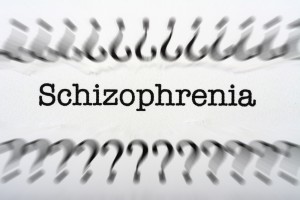
Schneiderian first-rank symptoms (FRS) of schizophrenia encompass a small range of hallucinations and delusions (FRS; Schneider, 1959). Specifically; auditory hallucinations, thought broadcast, thought insertion, thought withdrawal, and delusional perception.
Relative to other symptoms of psychosis, the presence of a single FRS is considered sufficient to reach a diagnosis of schizophrenia, hence the special treatment traditionally afforded to FRS within diagnostic manuals (Shinn et al., 2013).
Emerging evidence for the effectiveness of early intervention in psychosis emphasises the need to accurately identify those who will go on to develop schizophrenia (Marshall & Rathbone, 2011), particularly as untreated psychosis can greatly exacerbate an individual’s prospects for relapse and recovery (Bottlender et al., 2003). In lieu of more in-depth assessments or highly-trained clinicians, FRS may serve as a quick, efficient diagnostic tool.
On the other hand, there is much empirical uncertainty regarding the diagnostic specificity and sensitivity of FRS despite its ubiquity (Shinn et al., 2013). Specificity is a statistical term referring to the rate at which a medical test correctly identifies those who actually have the illness (the true positive rate); sensitivity refers to the ability of a test to correctly determine those who do not have the illness in question (the true negative rate; Altman & Bland, 1994).
Although previous studies have examined the usage and predictive utility of FRS, no reviews have systematically evaluated the accuracy of FRS for diagnosing schizophrenia. In a Cochrane review published in 2013 but updated just this year, the authors attempted just that (Soares-Weiser et al., 2015).

First rank symptoms are auditory hallucinations, thought broadcast, thought insertion, thought withdrawal and delusional perception.
Methods
Two reviewers independently searched available databases. The participant population included both adolescents and adults presenting with psychotic symptoms at first admission. Comorbidity (e.g. dual diagnoses) and studies where related diagnoses such as schizoaffective disorder were combined in the data were not excluded.
Examining these studies, the reviewers were interested in whether the presence of one or multiple FRS (verified by a trained clinician) in participants presenting with non-organic psychotic symptoms would then go on to be diagnosed with schizophrenia. The diagnostic accuracy of FRS was pitted against clinical history and/or examinations performed by a qualified professional, typically employing symptom checklists from diagnostic manuals (i.e. DSM and ICD).
From the available references, the reviewers extracted the number of true positives, true negatives, false positives, and false negatives. Methodological quality was assessed by judging the risk of bias present in each study. Sources of bias included how patients were selected for inclusion, and how the diagnostic test under observation as well as those used for reference were implemented.

This updated Cochrane review aimed to systematically evaluate the accuracy of first rank symptoms for diagnosing schizophrenia.
Results
In total, 21 studies were included; 13 in people only with psychotic symptoms, and 8 in people with both psychotic and non-psychotic symptoms admitted to a psychiatric ward. Seventeen studies were prospective, 3 were retrospective, and 1 was both. Twelve studies consecutively enrolled participants, 3 randomly selected participants, 2 selected participants from a previous study, and 4 did not report how participants were selected. Studies were conducted from 1974 to 2011, with the majority (80%) conducted in the 70’s, 80’s, and 90’s.
The studies had a total sample size of 6,253 participants, with 5,515 included in the analysis. Only 5 studies were explicitly diagnostic test accuracy studies, with the majority taking place in a research setting rather than a clinical one. Six of the studies included those with first episode psychosis or their first admission to hospital, although duration of symptoms was not reported. Nine of the studies specifically targeted schizophrenia, while 3 also included schizophrenia-related illnesses, with the remainder not reporting a target diagnosis.
Just over half of the studies used at least one FRS to diagnose schizophrenia, with the rest not reporting the number of FRS needed for diagnosis. Reference tests varied across studies, including clinical interviews, medical records, and operational criteria (checklist) in differing combinations.
The principal risk of bias discovered across studies regarded how patients were selected, and whether those conducting diagnostic tests were properly blinded (this was not reported). Mostly, studies did not report study methods sufficiently.
Main findings
- In 20 studies, FRS differentiated schizophrenia from all other diagnoses with a 57% sensitivity (50.4% to 63.3%), and a specificity of 81.4% (74% to 87.1%).
- In 7 studies, FRS differentiated schizophrenia from nonpsychotic disorders with a sensitivity of 61.8% (51.7% to 71%) and a specificity of 94.1% (88% to 97.2%).
- In 16 studies, FRS differentiated schizophrenia from other types of psychosis with a sensitivity of 58% (50.3% to 65.3%) and a specificity of 74.7% (65.2% to 82.3%).

The review found that first rank symptoms correctly identified people with schizophrenia 75% to 95% of the time.
Discussion
The authors summarise that:
The synthesis of old studies of limited quality in this review indicates that FRS correctly identifies people with schizophrenia 75% to 95% of the time.
The use of FRS to diagnose schizophrenia in triage will incorrectly diagnose around five to 19 people in every 100 who have FRS as having schizophrenia and specialists will not agree with this diagnosis. These people will still merit specialist assessment and help due to the severity of disturbance in their behaviour and mental state. Again, with a sensitivity of FRS of 60%, reliance on FRS to diagnose schizophrenia in triage will not correctly diagnose around 40% of people that specialists will consider to have schizophrenia.

The reviewers concluded that using first rank symptoms to diagnose schizophrenia in triage will incorrectly diagnose around 5-19 people in every 100.
The findings indicated that if solely relied upon, routine use of FRS to diagnose, and hence determine treatment is likely to result in delayed treatment of some people with schizophrenia, and unnecessary treatment in some others. Considering the stigma associated with schizophrenia, an incorrect diagnosis could have an added negative impact on treatment and recovery.
The authors concluded that although FRS are highly prevalent in schizophrenia, they would not recommend their use as a diagnostic tool alone. Granted, it is unlikely that in typical practice FRS would be used on their own, however in low-income countries where there is typically one psychiatrist to every one million people (McKenzie et al., 2004), this becomes more likely, and in fact may be a useful tool.
Although the quote above provides overall estimates of the sensitivity and specificity of FRS in diagnosing schizophrenia, the authors also state that estimates varied greatly between studies, making it problematic to provide a single summary statistic. The studies were also primarily quite old, and not expressly designed to investigate the diagnostic accuracy of FRS for schizophrenia, meaning that the reference standards varied (e.g. different versions of the DSM/ICD), as did the range of disorders included in the data set. Nonetheless, reviews conducted as part of the Cochrane Collaboration are generally considered high-quality (Petticrew et al., 2002), and the estimates provided here are likely to be the most appropriate given the limited data available.
It is interesting that the final estimate of sensitivity was lower than the specificity estimate, meaning that there was a lower rate of patients being correctly diagnosed with schizophrenia than there were being correctly excluded from the diagnosis. This means that in theory, more people would be ruled out of having schizophrenia using FRS alone than if a more in-depth assessment was used. This makes some sense given that schizophrenia covers a wide range of symptoms, while FRS only encompass few, albeit prevalent symptoms.
Indeed, the special treatment previously afforded to FRS has now been eliminated in the latest iteration of the Diagnostic and Statistical Manuel of mental disorders (DSM-5) available since 2013. This means that while previously a single FRS was sufficient to reach a diagnosis of schizophrenia, FRS are now given equal weighting amongst other symptoms, wherein the presence of at least two psychotic symptoms are necessary for a diagnosis. This decision came as a consequence of the finding that although FRS are more prevalent in schizophrenia, they typically occur in conjunction with other psychotic symptoms, and a diagnosis is rarely dependent on FRS alone (Shinn et al., 2013; Tandon et al., 2013).
With this in mind, the importance placed on FRS may potentially reflect an out-dated historical bias. It is also perhaps worth mentioning that there is a general bias towards ‘positive’ symptoms as a whole (hallucinations and delusions), when cognitive impairment and ‘negative’ symptoms (e.g. flattened affect) have been found to have a bigger impact on social functioning over time.
Furthermore, from a clinical perspective, the available evidence indicates that early intervention for psychosis is effective regardless of diagnosis (Marshall & Rathbone, 2011). Certainly, many early intervention services are symptom-driven rather than diagnosis-driven, making it unclear why specificity of diagnosis is necessary for determining treatment pathways as long as psychotic symptoms are present.

The authors concluded that although first rank symptoms are highly prevalent in schizophrenia, they would not recommend their use as a diagnostic tool alone.
Conclusions
Overall, it seems that FRS are better at ‘ruling out’ schizophrenia than correctly predicting it, compared to standard diagnostic methods. Nonetheless, in low-income countries where time and resources may be limited, evaluating FRS remains a quick, simple tool for determining the potential pathway of illness in a decidedly heterogeneous disorder.
Limitations
- The authors state that the search strategy was wide to the extent some relevant studies may have been missed due to the sheer volume of screening required.
- The methodological limitations may have lead to overestimations of diagnostic accuracy.
- These same limitations may mean that patient selection was biased in some studies, thus not reflecting the range of patients present in typical clinical practice.
- There was heterogeneity of results across studies in the ranges of sensitivity and specificity due to significant differences in the reference standard diagnostic tests being used, and the spectrum of diseases evaluated together.
- The authors did order the data by time, finding little to indicate that the differing ages of studies contributed to variance in results, but this was a crude measure and the authors recommended that future studies conduct a regression analysis for time of publication.

This is a well conducted review including a large number (21) of studies, but there was significant heterogeneity across the included trials, which dated back to the 1970s.
Links
Soares-Weiser, K., Maayan, N., Bergman, H., Davenport, C., Kirkham, A. J., Grabowski, S., & Adams, C. E. (2015). First rank symptoms for schizophrenia. Cochrane Database Syst Rev, 1, CD010653. doi: 10.1002/14651858.CD010653.pub2
Altman, D. G., & Bland, J. M. (1994). Diagnostic tests. 1: Sensitivity and specificity. BMJ: British Medical Journal, 308(6943), 1552.
Bottlender, R., Sato, T., Jäger, M., Wegener, U., Wittmann, J., Strauß, A., & Möller, H.-J. (2003). The impact of the duration of untreated psychosis prior to first psychiatric admission on the 15-year outcome in schizophrenia. Schizophrenia research, 62(1), 37-44. [PubMed abstract]
Marshall, M., & Rathbone, J. (2011). Early intervention for psychosis. Schizophrenia bulletin, 37(6), 1111-1114.
McKenzie, K., Patel, V., & Araya, R. (2004). Learning from low income countries: mental health. BMJ, 329(7475), 1138-1140.
Petticrew, M., Wilson, P., Wright, K., & Song, F. (2002). Quality of Cochrane reviews: Quality of Cochrane reviews is better than that of non-Cochrane reviews. BMJ: British Medical Journal, 324(7336), 545.
Schneider, K. (1959). Clinical psychopathology. (Trans. by MW Hamilton).
Shinn, A. K., Heckers, S., & Öngür, D. (2013). The special treatment of first rank auditory hallucinations and bizarre delusions in the diagnosis of schizophrenia. Schizophrenia research, 146(1), 17-21.
Tandon, R., Gaebel, W., Barch, D. M., Bustillo, J., Gur, R. E., Heckers, S., Malaspina, D., Owen, M. J., Schultz, S., & Tsuang, M. (2013). Definition and description of schizophrenia in the DSM-5. Schizophrenia research, 150(1), 3-10. [PubMed abstract]


RT @Mental_Elf: Diagnostic test accuracy of first rank symptoms for schizophrenia http://t.co/TTQ1Rw9RXo
Diagnostic test accuracy of first rank symptoms for schizophrenia: Raphael Underwood summarises a recently upd… http://t.co/poLAOyS6aG
@Mental_Elf Now that is a great piece of work. Thank you!
Today @raphunderwood on @CochraneSzGroup review of the accuracy of first rank symptoms for diagnosing schizophrenia http://t.co/TTQ1RwrtlY
The Mental Elf liked this on Facebook.
Morning @EnhanceReviews We’ve blogged about your first rank symptoms for schizophrenia SR http://t.co/TTQ1RwrtlY Any thoughts? Cheers, André
@Mental_Elf great blog, I think it capture well the review findings.
.@CochraneSzGroup systematically evaluate the accuracy of first rank symptoms for diagnosing schizophrenia http://t.co/TTQ1RwrtlY
June Dunnett liked this on Facebook.
Rosemary Callahan liked this on Facebook.
RT @Mental_Elf: New SR finds that first rank symptoms correctly identified people with schizophrenia 75% to 95% of the time http://t.co/TTQ…
Don’t miss: Diagnostic test accuracy of first rank symptoms for schizophrenia http://t.co/TTQ1RwrtlY #EBP
RT @Mental_Elf: SR finds: using first rank symptoms to dx schizophrenia in triage will incorrectly dx around 5-19 ppl in every 100 http://t…
Cochrane Review: first rank symptoms correctly identify people w/ #schizophrenia 75-95% of the time http://t.co/Z1worHmjSl via @Mental_Elf
RT @CochraneLibrary: FRS vroegdetectie schizofrenie: 5-19% vals positief, 40% vals negatief. Lijkt mij toch waardevol http://t.co/pkZFrIKlxW
Diagnostic test accuracy of first rank symptoms for schizophrenia http://t.co/N2c1Q9V51J via @sharethis
“First rank symptoms for schizophrenia” http://t.co/UJiHTpBC3S
#ActuSanté – Diagnostic test accuracy of first rank symptoms for #schizophrenia http://t.co/HQt5AAlXMa By @RaphUnderwood via @Mental_Elf